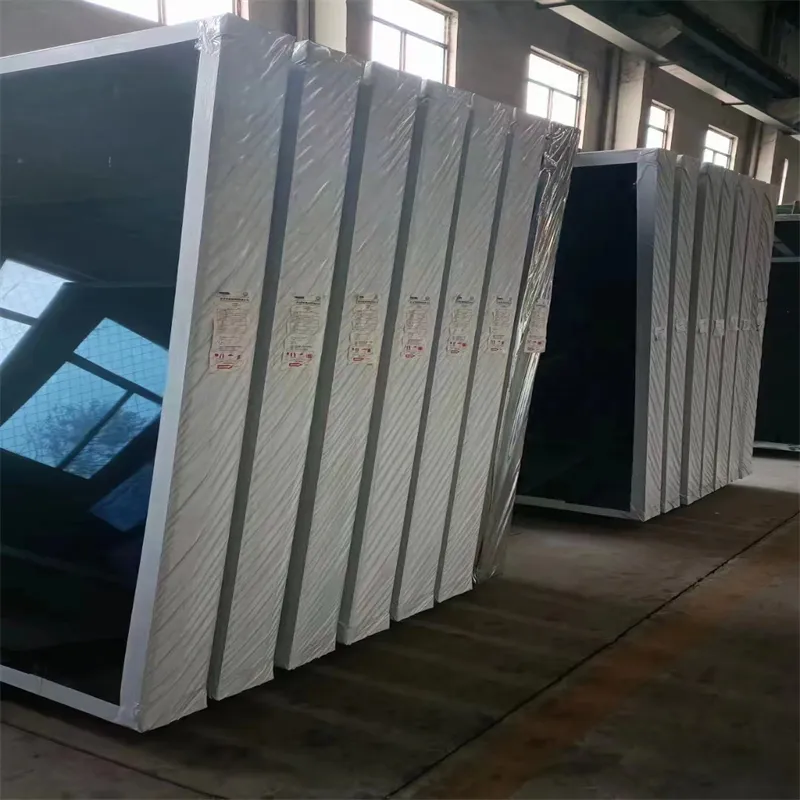Dec . 30, 2024 02:46 Back to list
low emissivity glass
Understanding Low Emissivity Glass An Energy-Efficient Choice for Modern Spaces
In an era where energy efficiency and sustainability are at the forefront of architectural design and construction, low emissivity glass, commonly known as Low-E glass, is becoming increasingly popular. This specialized type of glass is designed to minimize the amount of infrared and ultraviolet light that can pass through it without compromising the visible light that enters a space. Its unique properties make it an essential component in modern windows and façades.
What is Low Emissivity Glass?
Low emissivity glass is coated with a thin layer of metal oxide that reflects heat while allowing visible light to pass through. The term emissivity refers to the ability of a material to emit thermal radiation. Low-E glass has a lower emissivity rating compared to standard glass, which means it retains heat during winter months while reflecting excessive heat during summer. This property is crucial in maintaining comfortable indoor temperatures and reducing the need for heating and cooling, ultimately leading to energy savings.
How Does It Work?
Low-E glass works by utilizing its reflective coating to manage solar heat gain and loss. In the colder months, the coating reflects heat back into the building, keeping indoor spaces warmer. Conversely, in the hotter months, the glass reflects sunlight away, helping to keep the interior cool. This dual-action capability not only improves comfort but also minimizes the workload on heating, ventilation, and air conditioning (HVAC) systems, which is particularly beneficial in regions with extreme weather conditions.
Environmental Impact
The use of Low-E glass is an effective strategy for improving the energy efficiency of a building. By reducing energy consumption for heating and cooling, Low-E glass makes a significant contribution to lowering greenhouse gas emissions. Buildings that utilize Low-E glass can achieve higher energy performance ratings and potentially qualify for green building certifications, such as LEED (Leadership in Energy and Environmental Design). This has made Low-E glass a preferred choice among architects and builders looking to create eco-friendly structures.
low emissivity glass

Benefits of Low Emissivity Glass
1. Energy Efficiency Low-E glass helps to maintain comfortable temperatures indoors, thereby reducing heating and cooling costs significantly. 2. UV Protection The glass blocks a substantial amount of ultraviolet rays, which can damage furniture, flooring, and artwork, preserving the integrity of interior spaces.
3. Condensation Reduction Low-E coatings help reduce condensation build-up on windows, which can help prevent mold growth and improve indoor air quality.
4. Aesthetic Appeal Available in a variety of styles and finishes, Low-E glass can complement diverse architectural designs without sacrificing natural light.
5. Long-Term Savings Although Low-E glass may have a higher initial cost than regular glass, the long-term energy savings can make it a financially sound investment.
Conclusion
In conclusion, low emissivity glass represents a significant advancement in building technology, combining energy efficiency with aesthetic appeal. By allowing architects and homeowners to reduce energy consumption while maintaining comfort and visual brightness, Low-E glass is not just a trend but a crucial element in the sustainable building movement. As the world increasingly gravitates toward environmentally-friendly solutions, the role of Low-E glass in energy-efficient design will only continue to grow, making it an invaluable choice for modern architecture. With ongoing innovations in this field, the future of building design is bright, indeed.
-
Safety and Style with Premium Laminated Glass Solutions
NewsJun.24,2025
-
Reinvents Security with Premium Wired Glass
NewsJun.24,2025
-
Premium Float Glass Line for Modern Architecture
NewsJun.24,2025
-
Low Emissivity Glass for Energy-Efficient Architecture
NewsJun.24,2025
-
High-Performance Insulated Glass Solutions for Modern Architecture
NewsJun.24,2025
-
Elevates Interior Style with Premium Silver Mirror
NewsJun.24,2025
Related PRODUCTS














